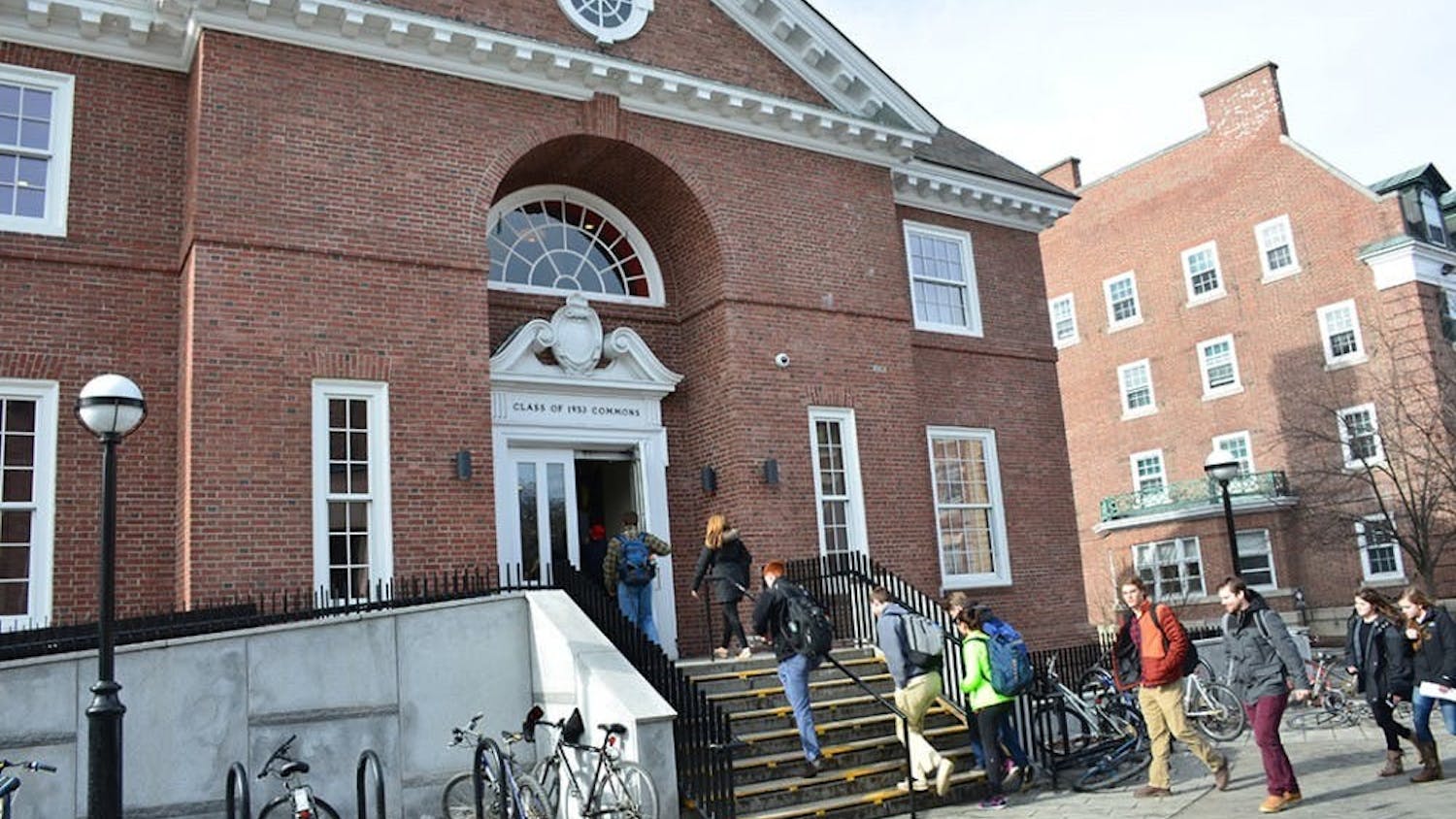Though she is currently experimenting with an electromagnetic calorimeter as an intern at the European Organization for Nuclear Research in Switzerland, Laura Bergsten ’15 never anticipated studying science at Dartmouth. With encouragement from her freshman advisor and other faculty members, however, Bergsten began to explore beyond her original interests in government, working as a paid research intern through the Women In Science Project, experimenting with quantitative studies classes and running computer simulations in physics laboratories. She eventually declared a physics and math double major.
Bergsten is one of 25 current students at the College who has declared a major in physics. Women constitute about 30 percent of all physics majors at Dartmouth.
Though the number of female faculty and majors in the sciences has more than doubled since the 1990s, gains are unevenly distributed among different fields, according to data provided by assistant director for undergraduate advising and research Kathy Weaver.
Undergraduate women now outnumber men in the life sciences but still remain a minority of physics, engineering, math and computer science majors, department chairs said.
In the Class of 2014, women comprise about 25 percent of engineering majors, 25 percent of physics majors and 24 percent of computer science majors.
In the earth sciences department, approximately 55 percent of majors over the past four years have been women, department chair William Dade said.
In 2010, roughly 20 percent of computer science and engineering degree recipients in the U.S. were women, as were about 40 percent of physical sciences B.A. candidates, according to data from the National Science Foundation.
Chemistry department chair Dale Mierke said 46 percent of Dartmouth’s current chemistry majors are women, a 9 percent increase from 2010.
Computer science department chair Thomas Cormen, the women in computer science club advisor, said his department has taken several steps to support its female majors, including sponsoring student attendance at the Grace Hopper Celebration of Women in Computing, an annual conference in October that includes technical talks and career mentoring workshops. In 2013, the department spent $35,000 to send 26 students to the conference, Cormen said.
Sucharita Jayanti ’14, a computer science and math double major, said she found a job through the conference, which she has attended for the past two years. Once she graduates, Jayanti intends to work at Amazon as part of a cloud storage team in Massachusetts.
Computer science professors and students said the department could focus on strengthening academic support for students by increasing the number of female faculty it employs and improving student-to-faculty ratios.
Bergsten said she believes math and physics classes are small enough that students feel comfortable approaching professors directly for help. As the former president of Dartmouth’s chapter of the National Association for Women in Mathematics, Bergsten said she hopes to create a community of women in the math and sciences because she thinks female students can feel isolated in some of their science classes. They may then quit or not participate as a result.
“Often times, people like myself feel uncomfortable in a classroom that’s mostly guys,” Bergsten said. “My internship in the fall had very few women scientists, and that made me feel not as comfortable speaking up or asking questions.”
Mathematics professor Carolyn Gordon, who served as president of the National Association for Women in Mathematics, said women need role models and contemporaries in their fields.
Gordon said women, along with other underrepresented groups, should be encouraged to continue with mathematics.
“I don’t mean to be stereotyping,” she said, “but society gives women the message that they are not as qualified a lot more than it gives men, and that gets internalized.”
Gordon said Dartmouth’s student chapter of the association seeks to build a community through events with faculty and mentorship programs.
Chemistry professor Jane Lipson said the presence of more equal numbers of men and women in chemistry provides adequate peer internal support for students in class, though further institutional support encourage women to continue their studies.
Physics and astronomy department chair James LaBelle said the department actively tries to attract female graduate students by establishing personal contact with applicants.
LaBelle said about 25 percent of physics faculty at the College are women.
Nationally, 13 percent of physics faculty are women, according to an American Institute of Physics report published last July.
Earth sciences professor Meredith Kelly said she thinks women are well-represented in her field until they reach the level at which they would take on a faculty post.
“That’s the clog in the pipeline,” Kelly said. “It’s hard because you’re older, you may be married or have kids, or may want to be married or have kids, and a faculty position requires that you are able to move wherever.”
Kelly added that she has observed that among her colleagues male assistant professors are more likely to be married, while women are more likely to be single.
“It’s a tough road, and it takes some sacrifices,” she said.



